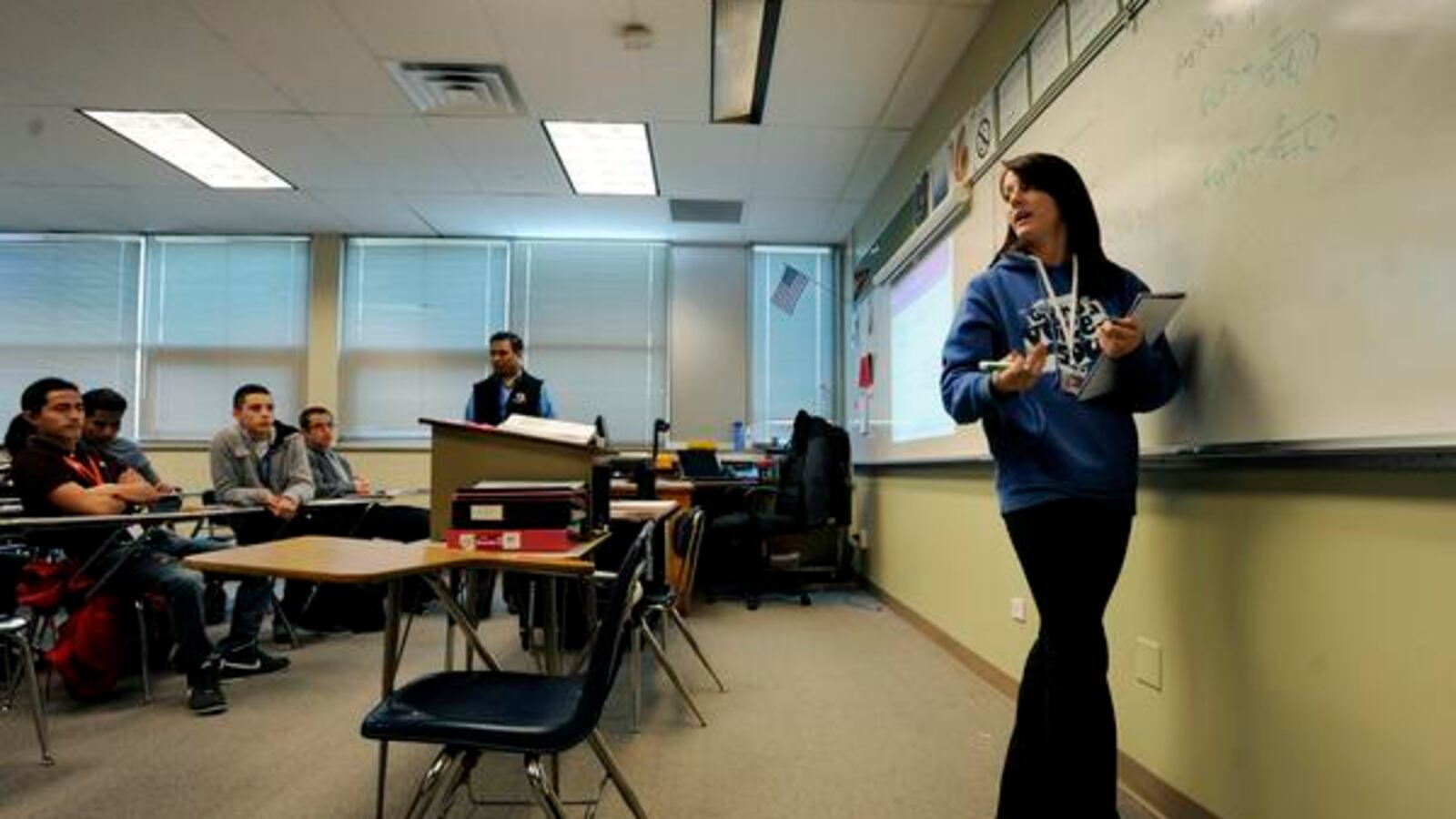The Aurora school board on Tuesday rejected increasing student-to-staff ratios as a way to cut the budget, a move that would likely lead to more crowded classrooms and fewer teachers.
Aurora Public Schools Superintendent Rico Munn was seeking the board’s guidance on the idea, one of several under consideration to trim the 2017-18 budget by about $31 million.
More than 100 teachers, parents and community members packed the board meeting to speak out about the impact of increased class sizes — and the board told Munn to look elsewhere.
Munn presented the request saying the district would try to change staff ratios as little as possible. While more modest budget cuts this year have not been felt in classrooms, Munn said it may be inevitable. The district is facing a budget crisis due to record enrollment declines, among other issues.
Staff salaries make up by far the largest share of school districts’ budgets.
“If we take 70 percent of our budget out of the conversation, then that leaves very little room to address what are significant unknowns that are in front of us,” Munn said.
In Aurora, staffing ratios are used to calculate the largest portion of school budgets.
Opponents’ criticism of the plan at Tuesday’s board meeting contrasted to what district officials gathered during a community input process. Of four budget-cutting scenarios, one that included the staff-ratio increases received the most first-choice votes from participants.
District officials in laying out the scenarios claimed that increasing the staffing ratio would not directly increase class sizes.
“Personnel dollars are allocated to schools and then principals make staffing decisions,” it stated.
On a practical basis, however, it’s hard to reach any other conclusion, according to educators and community members who spoke during Tuesday’s public comment.
“I currently have 31 students in my home room,” one teacher told the board. “The more students I have, the harder my job becomes.”
Board president Amber Drevon said that because the increased student-to-staff ratios had more than a 90 percent chance of increasing class sizes, she would rather not change the ratios.
“I think our class sizes are too big as it is,” Drevon said.
Four of the six board members at Tuesday’s meeting said the same, asking Munn and district administrators to take a closer look at all other options, including some scenarios submitted by the public.
District officials have sought to clarify that the district is not bound to pick any of the drafted scenarios — including the ones they drafted — or to follow them as presented.
“The scenarios were meant to drive a community conversation,” the district’s budget website now states. “They were NOT designed to represent specific courses of action.”
The district is still able to present other cuts later this spring, said Patti Moon, a district spokeswoman.
In part, the district says the cuts are needed because of a declining trend in student enrollment, and in part because of a potential drop in property taxes that would mean less local money for schools. The district is also looking to start building up its reserves — basically, rainy day money — instead of continuing to dip into the fund.
In the current school year, the district has already made more than $3 million in administrative cuts and authorized use of reserves to prevent other mid-year cuts.
Board member Dan Jorgensen asked the district to consider using dollars from reserves once again for next school year. At the end of the 2015-16 school year, the reserves stood at more than $15 million.
The board also had a brief discussion Tuesday insisting that they had the right to analyze the budget line by line, against the advice of the district’s attorney citing the district’s governance policy. Board members said they did not want to analyze the budget that way, but said they would if they needed to.
“Everything is on the table,” Drevon said. “We’re a long way away from making any final budget decisions.”

